Striped racer snakes (Masticophis lateralis) are known as California whipsnakes. They are fast-moving snakes and competent swimmers even though they are land snakes. These fast snakes are colubrids and are often active during the day.
Striped racer snakes are long and slender with yellow or cream stripes on both sides of their black or brown bodies and are exclusive to the continent of North America. This article takes a look at the largest striped racer ever recorded.
How to Identify a Striped Racer
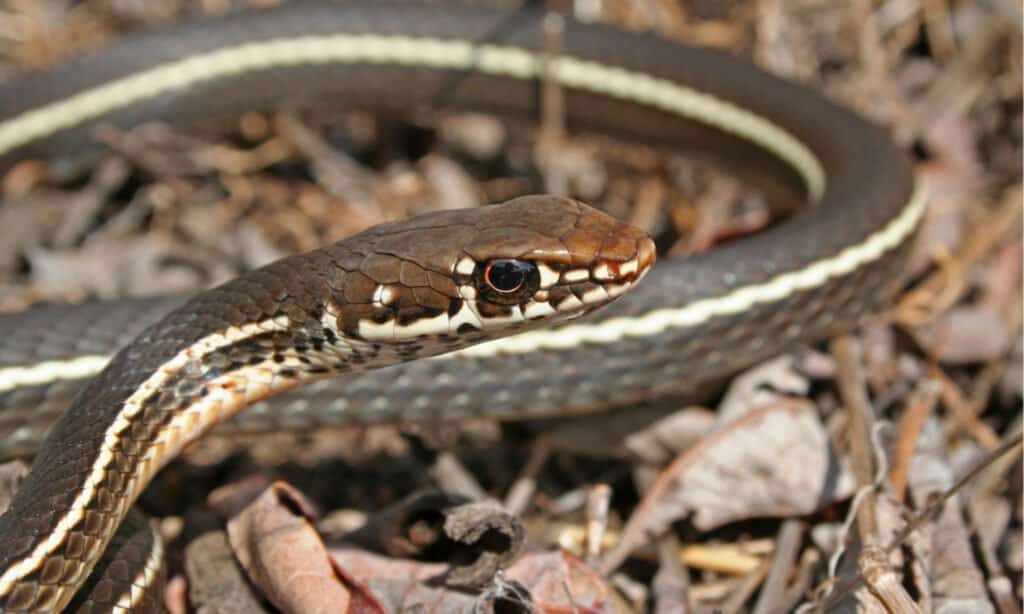
Striped racers have dotted underside to their wide heads.
©Creeping Things/Shutterstock.com
Striped racers often fall victim to wrong identification as several snakes share their black body color and yellow stripes. Some snakes that look identical to the striped racer are the Alameda whipsnake (Masticophis lateralis euryxanthus) and garter snakes, such as the eastern and western garter snakes.
Striped racers share more than skin colors and stripes with Alameda whipsnakes. Alameda whipsnakes are a sub-species of striped racers and share many adaptive characteristics with their Californian cousins. Both snakes have long, slender bodies and wide heads, as well as yellow, cream, or orange stripes running along their sides.
Choice of habitats and location make distinctions between the two snake subspecies easier. Alameda whipsnakes are often found in Alameda County in California (from whence their name was derived), Northern Santa Clara County, San Joaquin, and San Francisco Bay. On the other hand, striped racers are found all around California and in parts of Mexico. This spread around the state is because striped racers are more abundant in the western state and are of least concern, while Alameda whipsnakes are more restricted, location-wise.
Garter snakes are lookalikes, but unlike striped racers, they have a dorsal stripe in addition to their yellow stripes. Also, striped racers generally have fewer scales than garter snakes.
What is the Largest Striped Racer Ever Recorded?

Striped racers have been known to reach 6 feet.
©Matt Jeppson/Shutterstock.com
On average, striped racers measure from 3 to 4 feet. Their length and slender bodies give them their whiplike structure. Currently, there is no official record length of a striped racer snake, however, some records claim that these snakes can grow as long as 6 feet. This puts them above snakes like the short-headed garter snake and lined snake but lower than rat snakes which are often compared to racer snakes.
The largest racer snake ever recorded was a black racer which measured 73 inches long.
Where are Striped Racers Found in America?
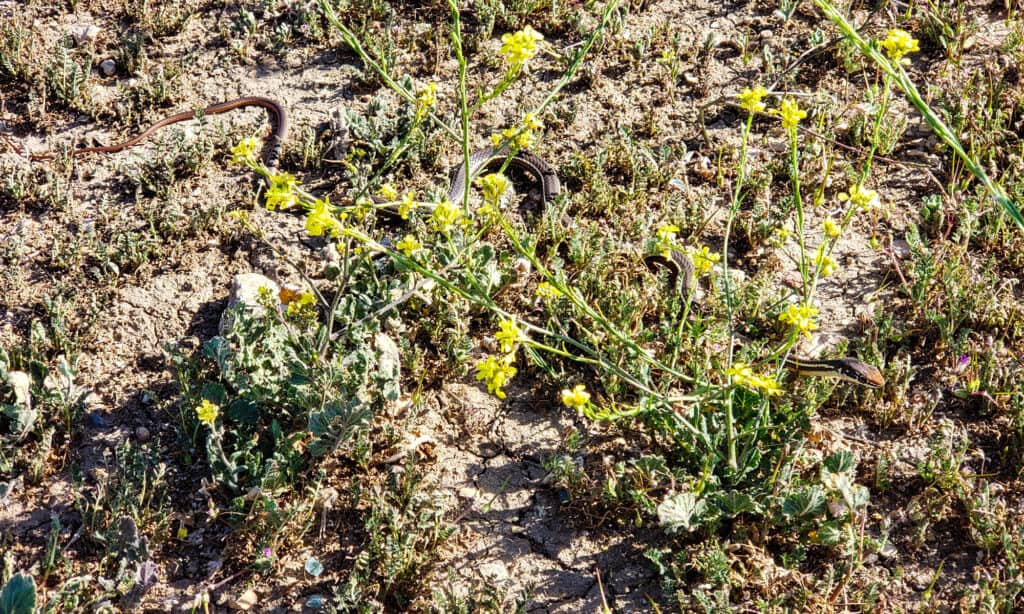
The diverse ecosystem in the State of California offers striped racers a variety of prey and habitat options.
©Alia Ollikainen/Shutterstock.com
Striped racers are prominently found in the State of California in the United States of America. They are usually found in several habitat types such as deserts, coasts, woodlands, foothills, chaparral, pine forests, etc.
These diurnal snakes prefer a sunny climate for habitation, usually about 75 to 99 degrees Fahrenheit (25.6 to 37.2 degrees Celsius), which makes the Golden State the perfect place for these reptiles to thrive. The diverse ecosystem in the State of California also offers striped racers a variety of prey and habitat options. Due to a shared border, striped racers are also found in parts of Mexico.
Are Striped Racers Venomous?
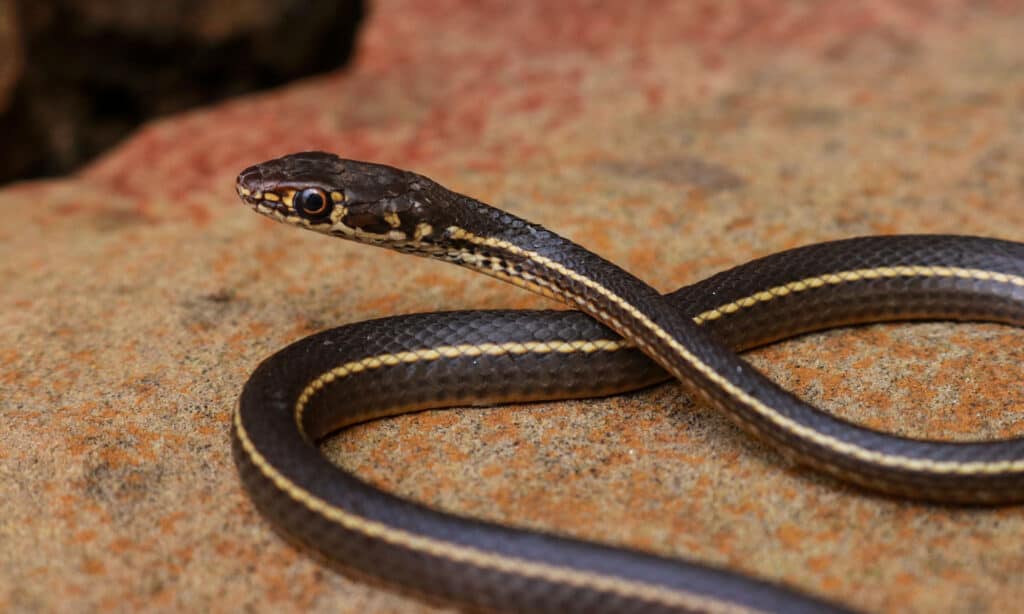
Striped racers are not venomous snakes.
©Creeping Things/Shutterstock.com
Striped racers are not venomous snakes. However, despite their lack of venom, they are still quite dangerous. When attacking prey or when forced to attack a predator, striped racers are known to bite repeatedly until death. Their sharp teeth bend backward (or inwards) to better grip as they bite.
While their bites are not venomous, they can still be painful and dangerous. So, it is best not to startle a striped racer or handle them. If bitten, see a doctor as soon as possible.
Are Striped Racers Aggressive?
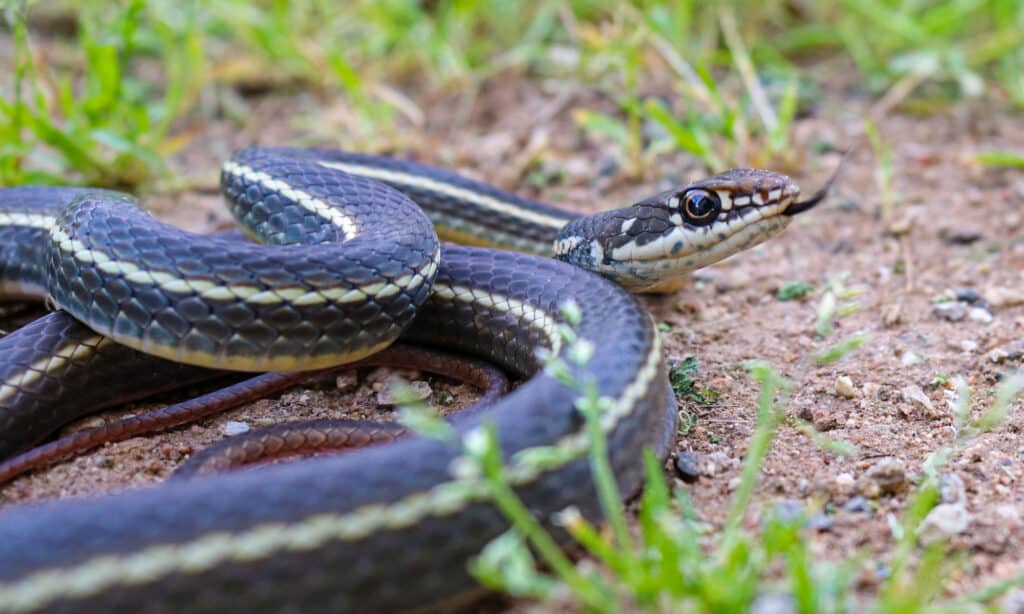
Striped racers are an aggressive snake species.
©Creeping Things/Shutterstock.com
Striped racers are aggressive snakes and prefer to stay alone and away from humans. This characteristic also translates to handling, as striped racers would strike quickly and repeatedly if they feel threatened. Their preference to be alone makes them quite difficult to keep as pets.
What Do Striped Racers Eat?

Striped racers eat small rodents, small birds, large insects, lizards, frogs, salamanders, and snakes.
©Sholmes370/Shutterstock.com
Striped racers are carnivorous reptiles that eat small rodents, small birds, large insects, lizards, frogs, salamanders, and snakes. Their favorite diet choice of the forest prey are lizards which they sometimes swallow alive. Juvenile striped racers live off large insects until they get big enough for larger prey.
How Do Striped Racers Hunt Prey?
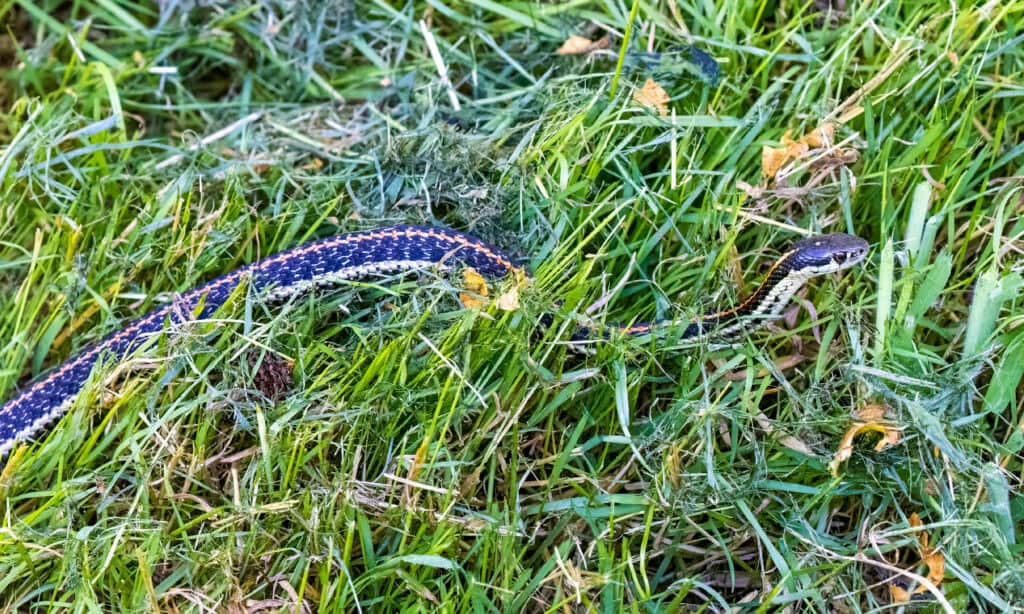
Striped racers can often be seen moving across the ground or in shrubs with their heads elevated to survey their area in search of prey.
©TayaJohnston/Shutterstock.com
Due to their slender form and lack of venom, many people wrongly assume that these snakes are constrictors. However, striped racers aren’t constrictors and use their bodies differently when attacking prey. They use their coiled weight to keep their prey down while they bite or swallow.
Striped racers largely depend on their eyesight to help them locate their prey. During hunts, they can often be seen moving across the ground or in shrubs with their heads elevated to survey their area in search of prey. Occasionally, they climb up trees and shrubs, waiting for their prey to get in sight. Once they have raced to their prey, striped racers bite repeatedly until death. Sometimes, these slender snakes do not wait long and consume their prey while still alive.
Facts about Striped Racers
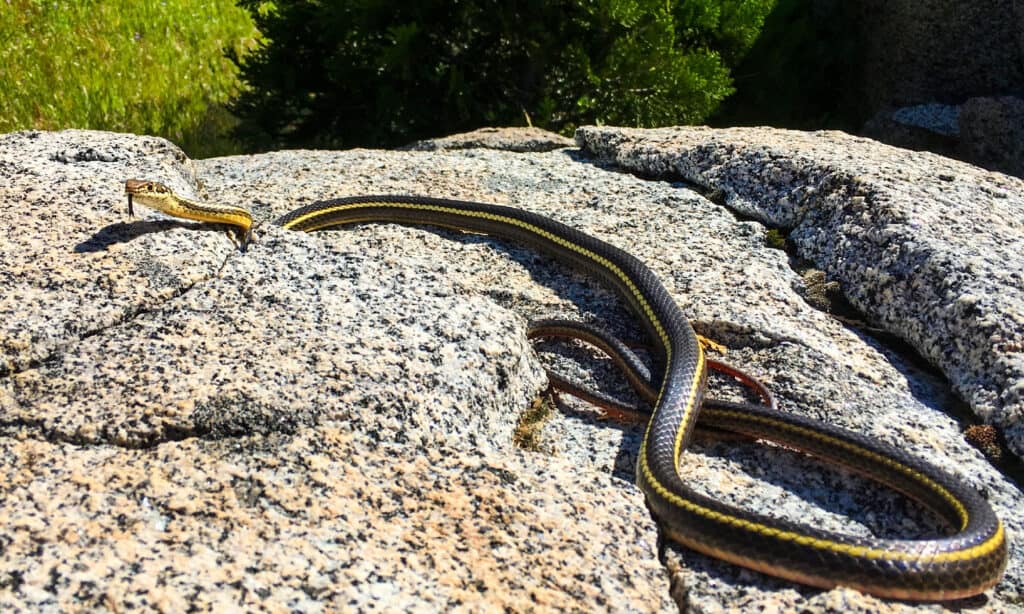
Striped racers have very smooth scales.
©Matt Jeppson/Shutterstock.com
There are so many amazing features and habits of the striped racer. Listed below are some fun facts about these beautiful North American snakes:
1. Striped racers lay about 6 to 11 eggs between May and July, which hatch in 2 – 3 months. During the mating season, the female striped racers stay close to their hibernation area while the males move about their habitation area in search of females.
2. Striped racers prefer to live alone. They hibernate between March and April and do not hibernate with other snakes.
3. Striped racers are not heavy snakes, despite their long lengths. These slender snakes weigh about 3.3 to 31.7 ounces (0.2 to 2.0 pounds).
4. Striped racers have very smooth scales.
5. While a striped racer’s speed is unknown, it is undoubtedly a fast-moving snake. Of all the species of racer snakes, the fastest is the black racer snake which has a speed range of 8 to 10 miles per hour.
The photo featured at the top of this post is © Creeping Things/Shutterstock.com
Discover the "Monster" Snake 5X Bigger than an Anaconda
Every day A-Z Animals sends out some of the most incredible facts in the world from our free newsletter. Want to discover the 10 most beautiful snakes in the world, a "snake island" where you're never more than 3 feet from danger, or a "monster" snake 5X larger than an anaconda? Then sign up right now and you'll start receiving our daily newsletter absolutely free.
Thank you for reading! Have some feedback for us? Contact the AZ Animals editorial team.







